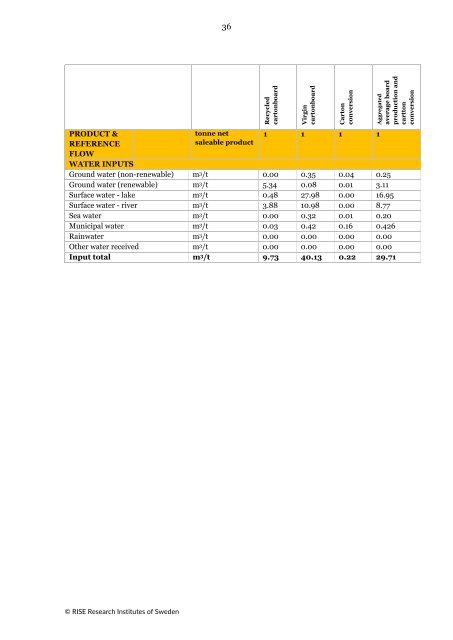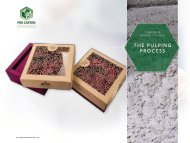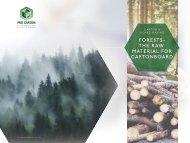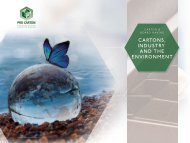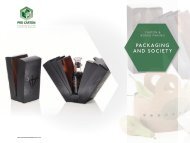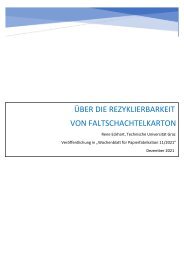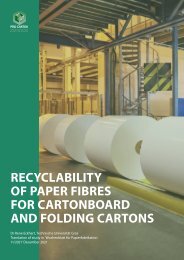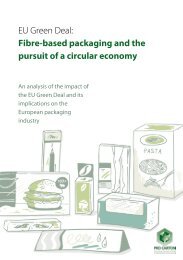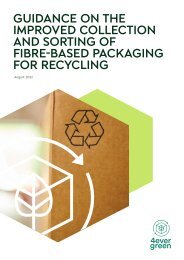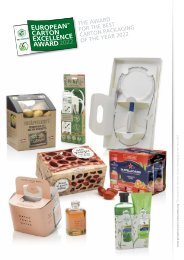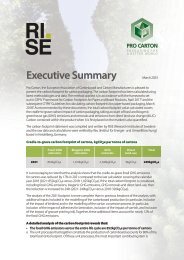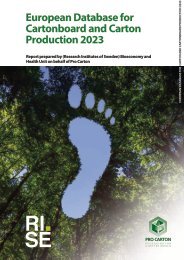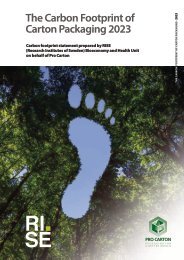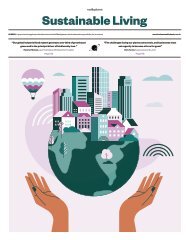European database for cartonboard and carton production, 2023
Create successful ePaper yourself
Turn your PDF publications into a flip-book with our unique Google optimized e-Paper software.
33<br />
into <strong>carton</strong>s. This process <strong>and</strong> the data collected mirrors the data collection <strong>and</strong> life cycle<br />
inventories presented by other sectors in the paper <strong>and</strong> board packaging industry 5 .<br />
There<strong>for</strong>e, Pro Carton intends to continue to collect <strong>and</strong> process the data using the same<br />
methods <strong>and</strong> present the in<strong>for</strong>mation in the same <strong>for</strong>mat.<br />
More recently, the <strong>European</strong> Commission has proposed the Product Environmental<br />
Footprint (PEF) as a common way of measuring environmental per<strong>for</strong>mance 6 . To<br />
facilitate the adoption of the PEF methodology, the <strong>European</strong> Commission is developing<br />
a <strong>database</strong> of life cycle inventory data. Category rules <strong>for</strong> compiling life cycle studies in<br />
compliance with the PEF methodology are also in development. PEF category rules have<br />
already been published <strong>for</strong> Intermediate Paper Products 7 , but no category rules have<br />
been published covering the conversion of these into end products.<br />
The PEF methodology is still in development <strong>and</strong> open to discussion, <strong>and</strong> category rules<br />
are currently only available <strong>for</strong> the <strong>production</strong> of base papers not including conversion.<br />
There<strong>for</strong>e, whilst the data <strong>for</strong> this life cycle inventory has been collected with reference<br />
to the PEF <strong>and</strong>, where relevant, the Product Category rules <strong>for</strong> Intermediate Paper<br />
Products, no claim of compliance with the PEF methodology or data requirements is<br />
made.<br />
Results<br />
Life cycle inventory <strong>for</strong> <strong><strong>carton</strong>board</strong> <strong>and</strong> <strong>carton</strong>s 2021<br />
Table 2 presents the gate-to-gate life cycle inventories <strong>for</strong>:<br />
• Production of <strong><strong>carton</strong>board</strong> manufactured primarily from primary fibres: Folding<br />
Box Board (FBB) <strong>and</strong> Solid Bleached Board/Solid Unbleached Board (SBB/SUB)<br />
• Production of <strong><strong>carton</strong>board</strong> manufactured primarily from recovered fibres: White<br />
Lined Chip (WLC)<br />
• Conversion of <strong><strong>carton</strong>board</strong> into blank <strong>carton</strong>s, including die cutting, creasing,<br />
printing <strong>and</strong> where applicable folding/gluing<br />
• An aggregated dataset, which considers the <strong>production</strong> of average <strong>European</strong><br />
<strong><strong>carton</strong>board</strong> <strong>and</strong> the conversion of this average <strong><strong>carton</strong>board</strong> into <strong>carton</strong>s.<br />
5 e.g., <strong>European</strong> Database <strong>for</strong> Corrugated Board Life Cycle Studies, FEFCO <strong>and</strong> Cepi<br />
Containerboard, 2021<br />
6<br />
https://eplca.jrc.ec.europa.eu/EnvironmentalFootprint.html?msclkid=d1c44024bd6311ec9a316<br />
02979545205<br />
7 Product Environmental Footprint Category Rules: Intermediate Paper Products, CEPI, October<br />
2018<br />
© RISE Research Institutes of Sweden


